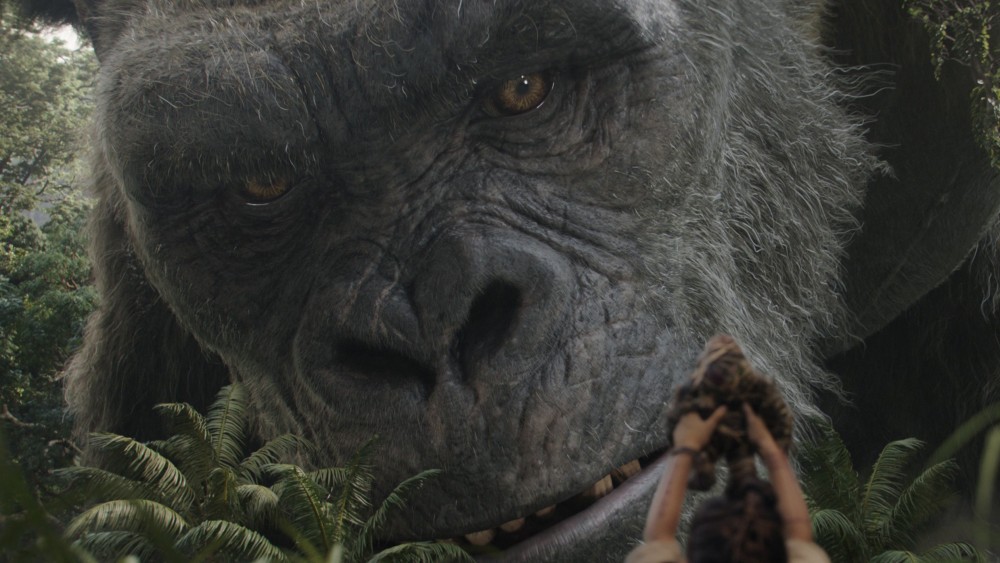
Continuing Below the Line’s three-part look at the visual effects of Warner Bros. and Legendary Pictures’ Godzilla vs. Kong, now playing in theaters and HBO Max. Next up, we have an interview with two of the fine folks at Weta Digital: VFX Supervisor Kevin Andrew Smith and Animator David Clayton.
We previously spoke with Smith for Zack Snyder’s Justice League, which he also worked on with GvK’s head VFX Supervisor John “DJ” DesJardin. For this interview, we spoke specifically about Godzilla vs. Kong, or in fact, just on Kong, because Weta worked on the opening Skull Island scene and the extended scene in Hollow Earth as Kong leads an expedition to a mysterious land at the earth’s core called the Hollow Earth.
A few weeks back, Below the Line got on a Zoom chat with Smith and Clayton for the following fast-paced interview where we also spoke about the infrastructure at Weta Digital and getting the right people on the right show. (Note: There are a few very minor spoilers if you haven’t seen the movie yet.)
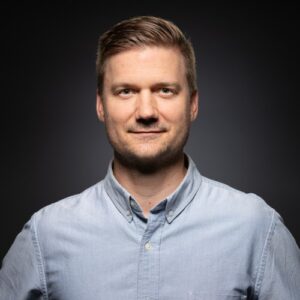
Below the Line: David, I spoke to Kevin a few weeks ago, and I’ve read up on your background. I know you both started at Weta around the time of Lord the Rings. What was your background before coming to Weta? What were you doing?
David Clayton: I was in Brisbane, Australia, and I was just working on post-production stuff, like music videos and ads and stuff. I was sort of just a 3D “generalist” for a while there, and then I put aside my job for a year or so and made an animated short with a friend of mine, and sort of sent that around the globe. I got accepted into different film festivals and animation festivals. I sent it to all the visual effects facilities and animation studios around the world and got a few “thanks but no thanks,” a few tumbleweeds, except for Weta Digital, here in Wellington. They offered me a job on Rings, and I jumped at the opportunity. Obviously, it was a bit of a dream come true to come and work on Gollum and Rings and be a part of it. I accepted a three-month contract, and then, here I am 19 years later. [laughter]
Kevin Andrew Smith: Did you come for Return of the King?
Clayton: Yeah, it was like the last push for that. It was literally only about three months, but I just loved it, then I worked on the extended edition as well and was able to work four or five months on some extended edition shots. I came a little late, but I definitely tried to maximize the opportunity to work on such an amazing cinematic moment.
Smith:I had been working in visual effects when I came here for about seven years. I mean, I was a generalist, but mostly lighting and Render Man shaders at that time, came down for Lord of the Rings. I did the first two and went back home to LA for about five years at Sony ImageWorks. Came back down here for Avatar, a little bit of the same thing. My wife was like, “Really? Didn’t we just get back from there?” I was like, “No, I just want to do this one movie, honey,” and here we are 13 years later still here.
Clayton: It becomes home. It’s sort of like one project leads to the next and the next one. There’s always this sort of diversity of projects as well. It’s very chaptered: One minute you’re working on Avatar, the next minute is giant apes, the next minute who knows what? So yeah, the diversity keeps things really interesting, and that’s a wonderful team and everything and just a great vibe. So yeah, it’s been cool.
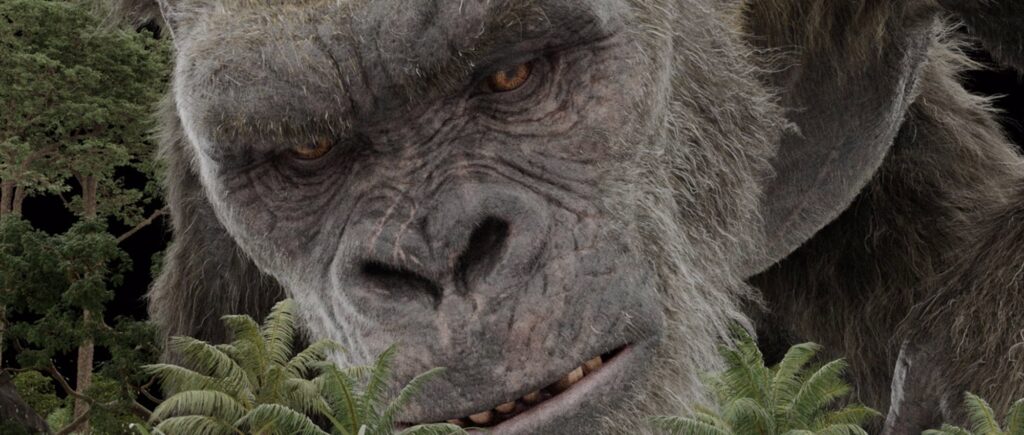
BTL: Speaking of diversity, I saw that you both also worked on Peter Jackson’s King Kong…
Clayton: I did, for two years. It was a movie I was really immersed in. I think that was in 2005, and over time, we started working here on Godzilla vs. Kong. It was probably like a 14 or 15 year gap, and it actually felt like returning to an old friend. There’s been moments where I wouldn’t be ready to work on another such and such movie for a while, but I guess 14 years is long enough for Kong. It just felt like a sort of familiar place. I love the character of Kong, and thankfully, that’s what we got to work on this movie was more of the character moments.
Smith: And you didn’t do any of the Apes movies, did you? Cause I didn’t either…
Clayton: No, so we hadn’t been completely in the zone of apes all these years. We’d been doing other stuff. So yeah, it felt like a good chance to reacquaint ourselves with this character.
Smith: We can contribute to the pigeonholing of Weta as the monkey people.
BTL: And then you finished this before you jumped right over to Justice League?
Smith: I might have had maybe 10 or 15 minutes off in between. We literally rolled from talking to DJ every week about finishing this, and then talking to DJ every week about that.
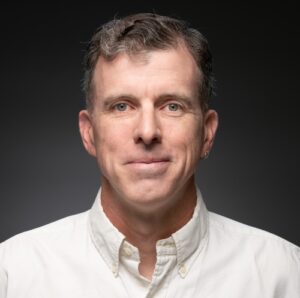
BTL: Were you coming on board to do certain things on Godzilla Kong or were you doing bits and pieces of everything?
Smith: That was one of the nicest things about this is we had the opportunity to get to do all the sequences, all the acting for Kong really to take him out of the realm of being this rampaging monster of Skull Island into a movie where he gets to be a rampaging monster some of the time, but also gets to be an actor and give a performance and try to give more of an emotional connection to the audience.
BTL: David, you obviously worked with Andy Serkis doing some of the performance capture for Jackson’s Kong. This one you were animating from the beginning, so how different was doing that, not having someone else’s performance to base it on?
Clayton: It was good, it was really good. We sort of folded in some of our own motion capture just to help us with sort of nuances, and getting some sort of realism into the performances, but it was largely keyframes. The facial performances were often invented, but we did gather reference of chimpanzees or gorillas, just the facial references of them performing little nuances, you know how apes have these moments that they move their lips, or snort or whatever. We found some really good examples of that, and in really high fidelity, we just animated those little 100-frame snippets of these realistic ape movements. And then were able to just kind of layer them in here and there where they felt appropriate to the performance. We had some motion capture for the body and these sort of high-res facial studies for the face. And then we could kind of draw upon those to just up the realism and make sure he felt like a really compelling, realistic character. Although largely, you can tell a lot with a little calm. That’s sort of what I love about him. Well, he doesn’t have to talk, but he’s so stoic that just a subtle raise of the brow or widening of the eyes can really… It’s like when you’ve got a dog and you can sort of anthropomorphize a dog?
I think that’s why we love having pets like dogs, but Kong’s kind of like that. If he does a certain thing at a certain time, you just plug into it and go “Aww, he’s feeling sad right now,” or “He’s thinking about his family.” Like what Kevin was saying about, we got him to be a character. It was like him sort of finding out that he had a family or ancestors back in the day, and he goes to discover his ancestral roots, I guess you could say, which in anybody’s lifetime, that’s a major milestone to get in touch with where you’ve come from and everything. It was pretty cool to be able to be part of that, for sure.
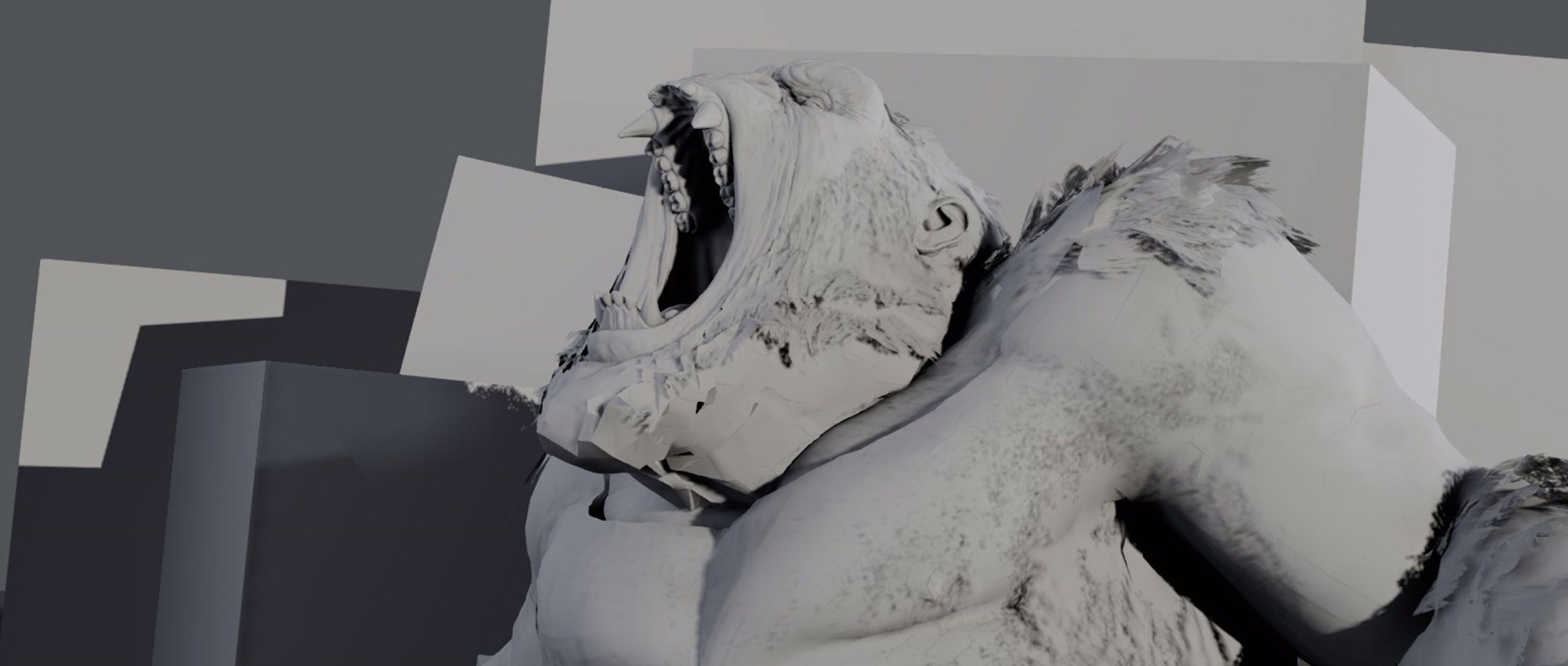
BTL: Since Godzilla had been in two other movies, how much flexibility did you have with his look and behavior? How much did you talk with Adam about that to make sure Godzilla remained consistent?
Smith: We had a lot of flexibility because we didn’t have to do any Godzilla shots. [laughs]
Clayton: It was quite neat in that way. I mean, we worked on a lot of Kong. We did do some fights. I mean, we had him fighting these giant winged snakes and these swarms of little owl-bat creatures. We got to put him through his paces a bit as a fighting monster, but that was the exception to the rule. Mostly we were doing shots of him sort of going on a journey of self-discovery earlier.
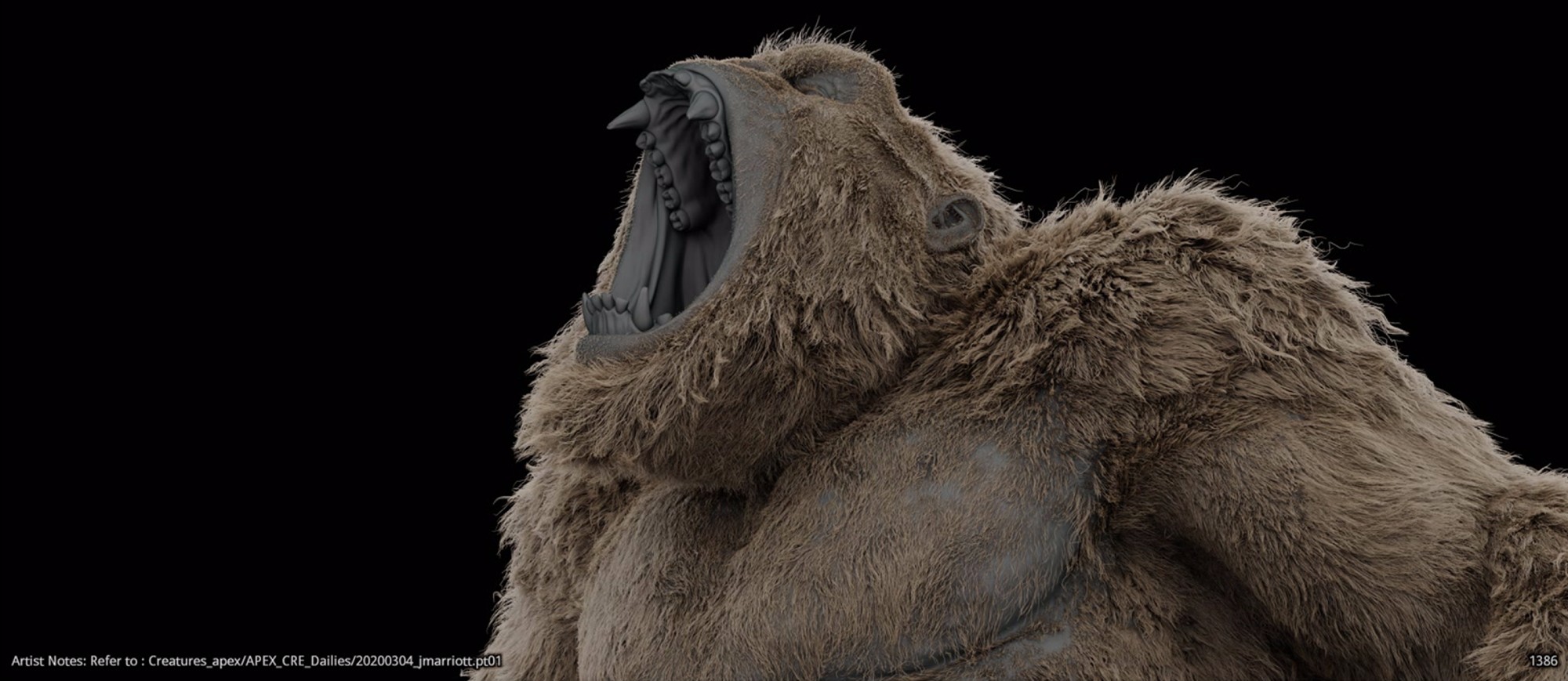
BTL: So you weren’t doing the Kong and Godzilla battles so much, but Kong on his own in the Hollow Earth mainly.
Smith: Yeah, kinda the second act. We’re with Kong from Antarctica, to when he pops back up out of the ground in Hong Kong. Everything in between there. As Dave said, he does fight the Nozuki so we get that nice little moment of [Kong] having a bit of a battle. Even in the temple, as everything collapses, he gets to have a little bit of action. It was more about having him be a performer and be an actor.
Clayton: Plus the opening and closing sequences. So the very opening scene where he wakes up and gets ready for his day. And then the very final [one].
Smith: We also did the getting out of bed scene and the scene at the end where they’ve taken him back to the Hollow Earth where he’s home.
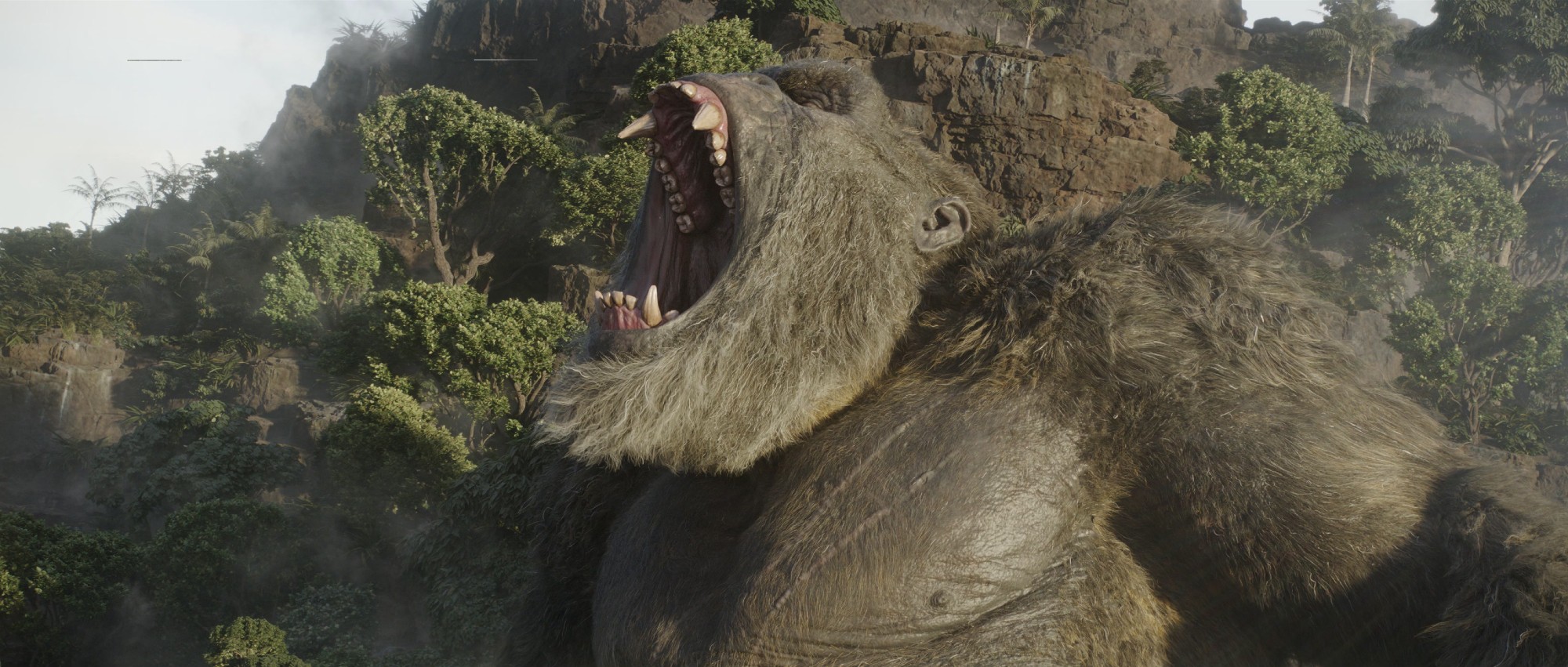
BTL: I was curious how much direct interaction you have with the director, Adam Wingard, especially when you’re creating performances from scratch. Or are you mainly interacting with DJ? I’m wondering particularly about scenes that might need direction in terms of performance.
Clayton: I think it was mostly the latter, because there were multiple vendors on the show. So DJ does a great job of getting everybody the information they need, bringing it all together and then just communicating with Adam through a single point. But having said that, we got the opportunity to go over to the Gold Coast when they were filming there and spend some time there and had some face time and meet those guys and had a few chats with Adam and just join the team, as it were, and just be a part of it. That’s really vital, because it means later when you’re on Zoom calls or maybe Cinesync or whatever, you feel like you know each other and you’re working with your colleagues. It just helps the ongoing kind of workflow.
BTL: There was a lot of great stuff in the Hollow Earth, so how early are you developing that stuff and presumably working with the Production Designers to figure out what they’re imagining these environments should look like?
Smith: As soon as we came on and started getting the plates and turnovers from the client, it was really kind of getting downloads of all that art, having DJ fill us in, on what kind of people we’re after.
You have to take that art and turn it into something believable and realistic. They had a pretty good sense of what they wanted Hollow Earth to be, what kind of feeling it was, this kind of prehistoric Land Before Time or Land of the Lost, not quite alien, but definitely when you see those shots, you want to understand that you’re in this very strange place. You’re in a place that you’re not just going to walk out your door, get in your car and go drive to, right? It was a fine line, because the first few passes we had at that were super-alien and very, very strange-looking and it was just too much. It was just turning the prehistoric-ness of it up a little bit and just enough.
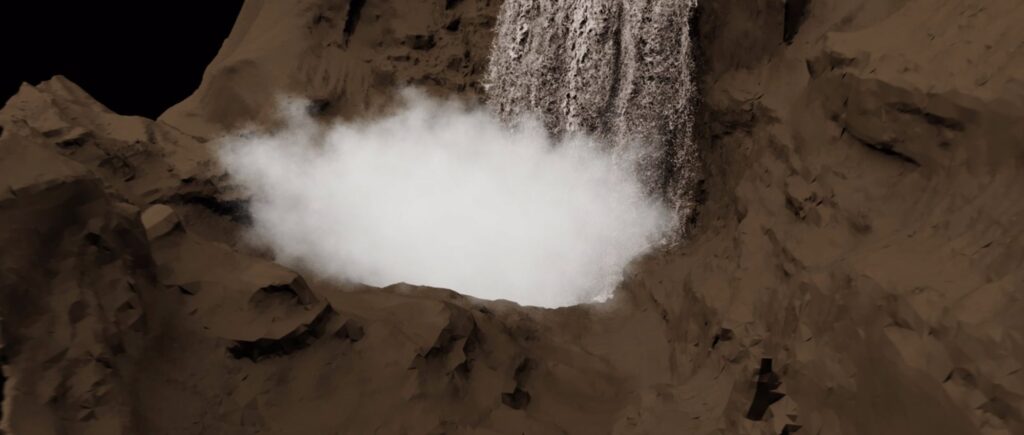
BTL: Are you integrating plates from other real locations or is it all created from the ground up in the computer?
Smith: Generally, the environments are pretty much from scratch. In Antarctica, there’s some locations — there were definitely things shot — but it’s all very up close and personal. And in the temple, again, there was a bit of a set built. There was a set piece right in front of Kong’s throne, but that’s a typical feature film set, so it’s maybe 50 meters long, and the inside of that temple is five kilometres across.
It informs us for look and feel to some extent, but yes, while there are plates, that environment is very much from scratch. In between, all the exterior stuff where our heroes are just in the cockpits of the HEAVs, and it’s more about Kong interacting with the environment, obviously, there’s no plates there. That’s just all digital environments.
They did shoot a bunch of plates in Hawaii. There’s that middle section of the Hollow Earth where it’s very lava-y, like a big lava field, and we’re tracking along with him, and we see those double mountains in the background. There is a bit of a plate underneath all of that.
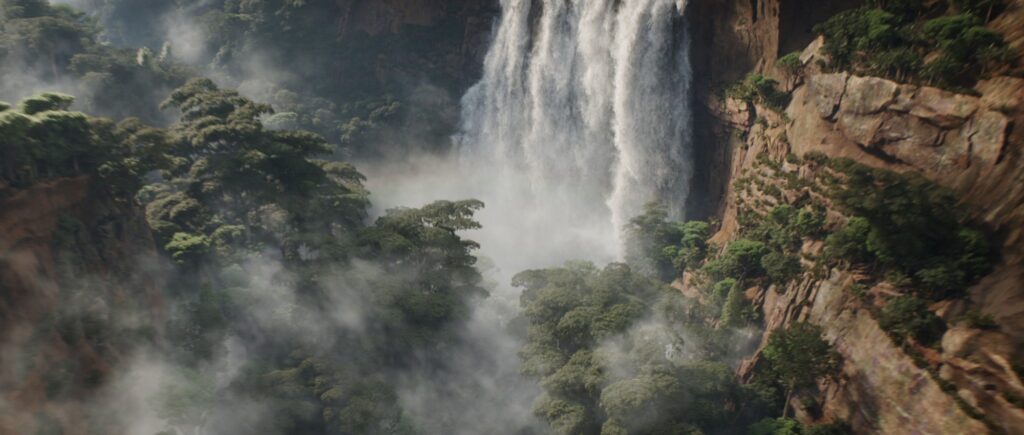
BTL: I was actually thinking more about the stage work and building something on top of it or extending those environments, but also using real locations as a way to build up and transform environments.
Smith: In the temple, definitely all the plates there were about mostly taking what we did for the look and feel of that giant space inside the temple, dropping that in the distant background. As soon as you start shooting down at the human scale… because the temple is big for Kong, and he’s 100 meters tall. So you suddenly drop the camera on the deck and put it by our characters, and you realize how big the inside of that temple is. Mostly it was about taking what we’ve done and dropping it in a deep background, and then keeping enough of the same look and feel and extending the set in the midground to make you feel like you’re still in that same world.
BTL: I recently did some interviews for WandaVision, and it was interesting to hear how they used different vendors and had them each working on a different part of each episode. It’s nice to hear that Weta can get a big chunk of the contiguous movie that’s all Weta with no other vendors working on them, which they can’t really do on a show like that.
Clayton: It’s cool to just immerse in something and know that you’re fully responsible for the second act, basically — you can really kind of get into it. As you progress through that, and you’re really in that zone, if filmmakers want to introduce new shots or perhaps previz out a new scene that’s been introduced, we can just spit that out quickly at that point, because we’re sort of in that zone. You’ve got a degree in Hollow Earth, you hold a certificate.
Smith: I mean, it’s always this journey, right, with DJ and to some extent, with Adam. You start with concepts and ideas and title cards, and you’re figuring out what this world is supposed to look like. As you do that, it becomes intuitive, and you’ve done things incrementally down to the point where, in your gut, you know the right decisions to make. You know, “This should be brighter, because that’s just what we’ve been doing.” As soon as you mix that up, and have a bunch of houses working [on it]… one facility has done a sequence and the next facility has done a sequence in the same kind of location but maybe it’s nighttime. You have to second guess, like what do you do? He’s filed his shots already at the other place. What do I do? You can’t intuitively know. You’re always checking against what other people are doing. It just makes it harder, or a better way to say it is it does make it easier, because as soon as we go into Hollow Earth, and then we leave Hollow Earth, that was all us. By the time you get the big machine up and running and cranking through the shots and you’ve figured out the looks, you intuitively know what the right decisions are most of the time and it goes a lot smoother.
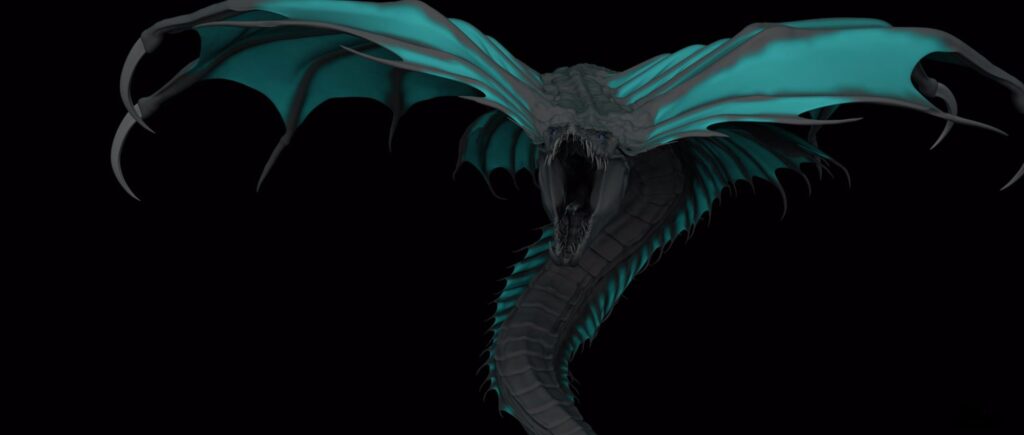
BTL: I may have asked about this last time we spoke. Considering the number of people who work at Weta, when you’re putting a project like this together, how does it work as far as getting the people you want on a show? Do you have to share people with other projects sometimes? I’m thinking it’s something like a football draft.
Clayton: If we backtrack 18 years ago, we were all just working on the same movie, a bunch of young whippersnappers all just gunning it to get the deadline and make this movie together. It was an amazing vibe, though it was kind of chaotic. Now, there’s a lot more management and a lot more organization and a lot more forward-planning, and diverting resources here and there to get things done efficiently and to look after our crew really well and sort of minimize crazy overtime.
Smith: There are probably very few people here who are doing one thing, like supervisors, generally, you’re doing one show. When you get down to people like a modeler, “Can I get that thing today?” No, because he’s on four shows, and you just have to wait. It becomes like Dave said, it becomes management. Now that you’ve mentioned it, I do wish it was more like sports. I want to go home [and my wife to ask] “How was your day, honey?” “Oh, I traded a modeler for a first round pick and two cases of beer.”
BTL: I thought there might be cases like that where someone is such a good modeler, for instance, that everyone wants to use them.
Smith: One of the nice things about Weta is that everybody here is operating at a pretty high level. There’s always standouts, and there’s always people who are in demand. But lucky for us, I mean, the centralized management, it’s their responsibility for making sure that you don’t have an A-team and a B team. Every show needs to be a Weta quality show, and you’ve got to spread everyone out through all the shows by range of skill sets, and certain people are good at certain things. We have a show that does that thing, you’re gonna want this guy because he’s good at that. It makes it hard, but there’s this kind of constant churn of moving pieces. Like things come up for people personally, and suddenly, somebody needs to take a month off, or there’s an illness or personal things happen. You can’t ignore your life just because you have a deadline. There’s always a bit of that, too, like moving people around. People go away and come back, people take vacations. It forces flexibility on us, which is actually probably just a good thing.
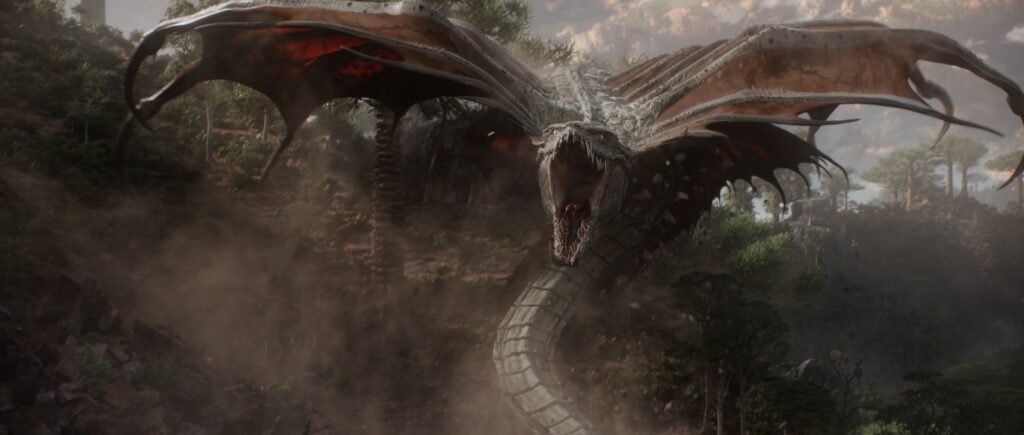
BTL: Earlier, you both mentioned that you’re “generalists.” I never heard that term before until I spoke to another VFX Supervisor, and he was telling me about his background as a generalist, so I thought, “Okay, that’s a thing.”
Smith: That’s because we’re extinct. Everyone from back in the day who is a generalist is like a supervisor or an environment artist — matte painting has become the home of generalists. It used to be back in the day, like when you did a shot, you did a shot. You had to model it. If you needed something, you modeled it. If you needed a rig, you made it. If you needed particles, you did them. If you had to animate it, you had to render it, you had to light it, you had to comp it, like you just had to do it all. You had to be able to put on all those different hats, and you can’t do a show that way anymore. Everything’s to specialize and very few people have all that knowledge to be that competent, and every piece of the pipeline from beginning to end, there’s just way too much stuff that happens now. Very few people are generalists anymore.
Clayton: It comes in handy, Kevin. I love drawing on my background when I’m doing previs. I mean, it could even just be a bunch of cubes in the background, which is what I did here on Apex Kong when he wakes up in his nest. So I just threw together some pretty nice mocap animation of Kong and some facial animation, but the background was just a bunch of cubes that show the basic structure and forms of whatever it might be… that’s something you can obviously just put together really quickly. But then you can start the filmmaking process with just the simple basics. If I needed to make a swarm of birds, I could use a particle system. If I needed to model up something a bit more complicated, that’s fine. I think it’s still good now to have those sort of different skills, if you can…
Smith: … and we encourage that here, too. We try as a company to encourage people learning different things like, because it helps everyone. You don’t want your pipeline to get to the point where someone just has their head down and is focused on a thing, and they finish it and they chuck it over the fence to the next guy, but they don’t understand how the decisions that get made all the way along the pipeline affect the next guy or the third guy or the guy all the way at the end, the poor compositor who’s stuck with the accumulated issues of the whole shot and the whole pipeline and having to make it work. The more you can train people in a generalist way, even if they’re doing a specific thing, the better the result is going to be.
We also spoke briefly with Smith about Clayton about the latest catch phrase in visual effects: “virtual production,” but we’ll be saving that for another time.
Godzilla vs. Kong is now playing in theaters and will be on HBO Max for a few more weeks.
You can read our previous interview with overall VFX Supervisor John “DJ” DesJardin here. Our next and last interview in this series will be with Bryan Hirota of Scanline VFX sometime next week.
All photos courtesy Weta Digital, Warner Bros. and Legendary Pictures, except where noted. Click on image for much larger versions.





